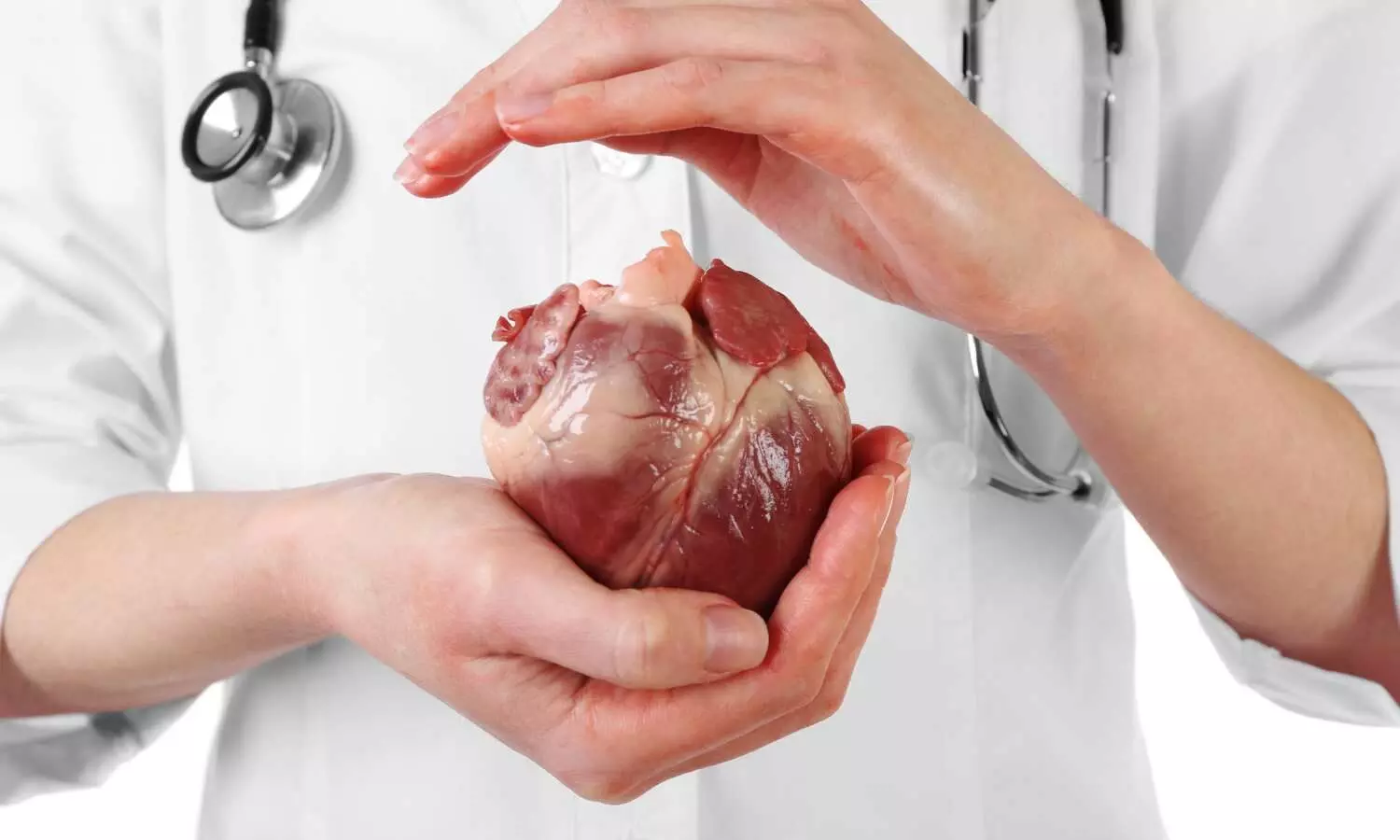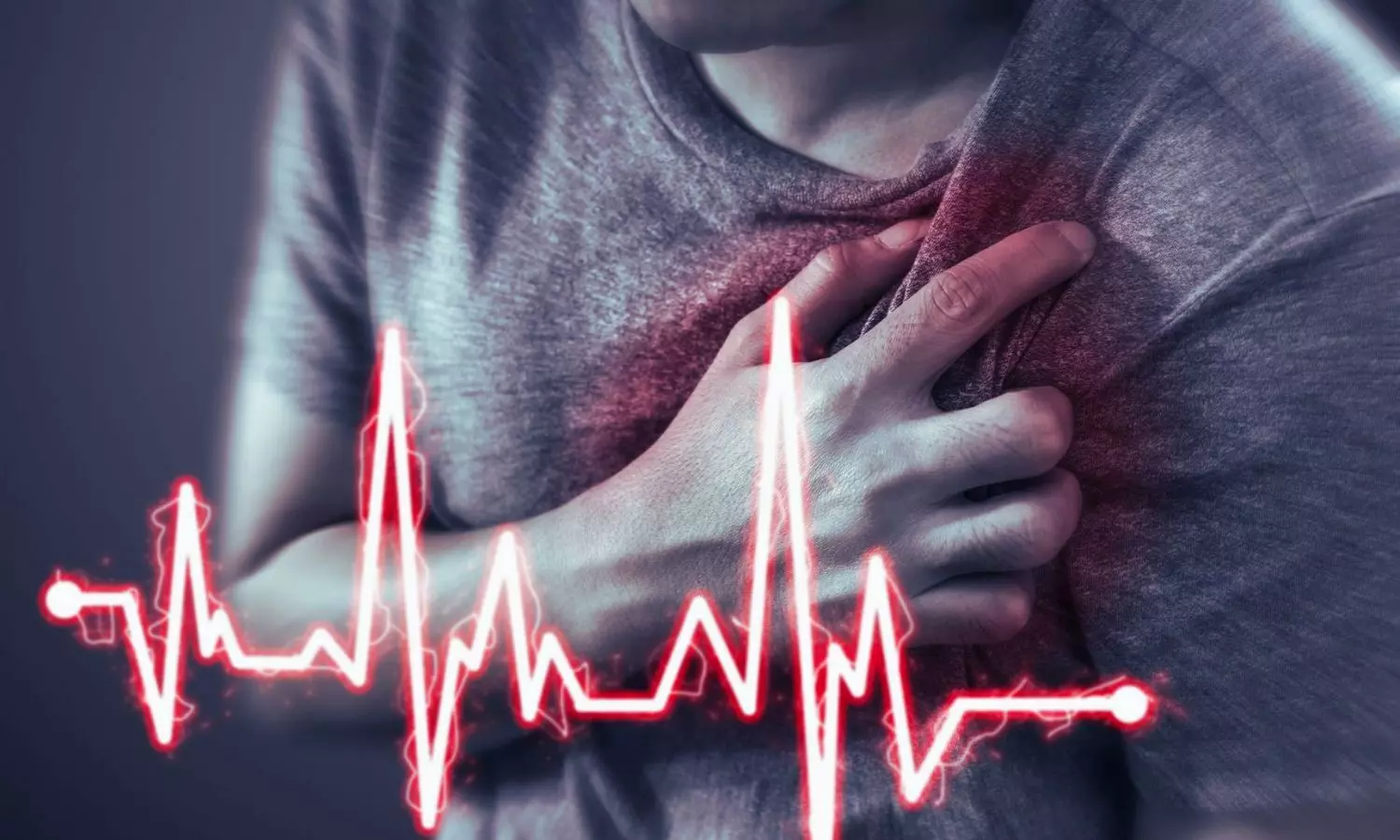Researchers develop mobile app to help diabetic patients monitor foot health
Powered by WPeMatico
Powered by WPeMatico
Powered by WPeMatico
Powered by WPeMatico

New Delhi: In a remarkable display of medical efficiency, doctors successfully facilitated the rapid transport of a live heart over a 25-kilometre distance, ultimately saving the life of a 51-year-old man.
The green corridor, spanning from Aakash Hospital in Dwarka to Fortis Escorts Heart Institute in Okhla, played a pivotal role in ensuring that the vital organ reached its destination in a mere 26 minutes, paving the way for a successful transplant operation conducted on Wednesday.
The recipient, who had been grappling with a severe heart condition for an extended period, found hope through the selfless act of an 18-year-old’s family. Tragically, the teenager had succumbed to injuries sustained in a road accident. However, in a testament to their generosity, the family consented to organ donation, allowing their loved one’s heart to be transplanted into the 51-year-old recipient.
“In critical condition due to patient suffered from a heart attack in 2021, subsequently underwent stenting to the left anterior descending artery (LAD) that since his ejection fraction was 30 per cent. He was kept on optimal medical management but being on osteopathic manipulative treatment (OMT), his condition started deteriorating and his hospitalisation was frequent due to heart failure, reports ANI.
Detailing the recipient’s medical journey, officials revealed that he had been battling a deteriorating heart condition, necessitating a transplant. Despite undergoing stenting procedures and enduring ongoing medical management, his health continued to decline, leading to frequent hospitalizations due to heart failure.
Dr. Vishal Rastogi, the director of Cardiology and Head of the heart failure program, had been overseeing the patient’s care for an extensive period, emphasizing the critical nature of the transplant.
The transplant surgery was led by a dedicated team of doctors, spearheaded by Dr ZS Meharwal, Executive Director and Head of Adult CTVS, Heart Transplant, and Ventricular Assist Device (VAD) program. Dr. Meharwal expressed profound gratitude to the donor’s family, acknowledging their immense sacrifice in the face of grief.
Dr ZS Meharwal, Fortis Escorts Heart Institute said, “The 51-yr-old recipient had been suffering from a severe heart condition for a long time. Over the past few months, his heart condition continued to deteriorate, and a heart transplant became essential. We extend our heartfelt gratitude to the donor’s family for choosing to donate, despite their immense grief. Such lifesaving and enriching surgeries would not have been possible without the tireless cooperation from NOTTO, local traffic and police authorities and most importantly, the donor families.”
Powered by WPeMatico

Researchers from the Perelman School of Medicine at the University of Pennsylvania showed that the antibody responses to new SARS-CoV-2 variant infections and vaccinations are powerfully shaped by prior exposures to earlier SARS-CoV-2 vaccines. The findings were published online in a study published in the journal Immunity.
The researchers analyzed antibody responses in people infected with or vaccinated against the relatively new SARS-CoV-2 variants BA.5 and XBB and found that even though BA.5 and XBB are very different from the original “ancestral” version of SARS-CoV-2, the responses to these newer variants came almost entirely from the B cell repertoire that was already in place due to prior vaccinations against the ancestral strain.
“Detailing how SARS-CoV-2 immune history influences the antibody response to new variants, through studies such as this one, will ultimately help us design more effective vaccines,” said study co-senior author Scott Hensley, PhD, a professor of Microbiology at Penn Medicine.
The study investigated how prior exposure influences antibody responses to SARS-CoV-2 variants BA.5 and XBB, both highly transmissible and differing significantly from the original virus. Boosters targeting these variants were introduced in 2022 and 2023.
“Prior vaccinations are highly beneficial for establishing memory B cells that can be rapidly recruited to produce neutralizing antibodies against new SARS-CoV-2 variants,” said Hensley.
Researchers found that individuals who initially had lower numbers of B cells elicited by the ancestral variant were more likely to produce totally new, variant-specific antibodies. More importantly, people who had high numbers of B cells against the ancestral SARS-CoV-2 strain were more likely to mount effective immune responses, which were mostly cross-reactive, to the BA.5 and XBB variants.
The main implication of the findings was that immunological imprinting from the original ancestral SARS-CoV-2 strain had a significant impact on the antibody responses to the BA.5 and XBB variants and boosters based on them. These responses still appear to be protective, but it is unclear that that protection will remain robust as SARS-CoV-2 variants continue to evolve.
“Most people alive today have been immunologically imprinted by ancestral SARS-CoV-2, but that will inevitably change as time goes on. We need to continue studying how different prior exposures impact immunity to new variants that come down the road, and how this immunity affects viral evolution.” concluded Hensley.
Reference: Timothy S. Johnston, Shuk Hang Li, Mark M. Painter, Daniel C. Douek, E. John Wherry, Scott E. Hensley; Journal: Immunity; DOI: 10.1016/j.immuni.2024.02.017
Powered by WPeMatico

Pune: Sambhaji Gadhave, a 62-year-old retired individual from Aklunj, Solapur, underwent a ground-breaking medical procedure at Sahyadri Hospitals to address severe leg pain caused by critical stenosis of the popliteal artery.
Powered by WPeMatico

A recent study by Dhruva Gohel unveiled promising evidence that support the use of sildenafil (Viagra), a phosphodiesterase-5 inhibitor which is commonly used in the treatment of erectile dysfunction, as a therapeutic option for Alzheimer’s disease. The key findings were published in the recent issue of the Journal of Alzheimer’s Disease.
This comprehensive analysis used real-world patient data from extensive databases, including MarketScan® Medicare Supplemental and Clinformatics®. This study found compelling evidence linking sildenafil use to a reduced likelihood of developing Alzheimer’s disease, after adjusting for various factors such as age, sex, race and comorbidities.
Their findings revealed that sildenafil usage was linked with a significant decrease in the incidence and prevalence of Alzheimer’s disease across multiple drug comparison groups. When compared to spironolactone, sildenafil showed a remarkable 54% reduction of Alzheimer’s disease risk in the MarketScan® database and a 30% decrease in prevalence in the Clinformatics® dataset.
Furthermore, this study analyzed the molecular mechanisms underlying the potential therapeutic effects of sildenafil. This research demonstrated that sildenafil treatment led to a dose-dependent reduction in tau hyperphosphorylation by utilizing induced pluripotent stem cells (iPSCs) derived from both familial and sporadic Alzheimer’s disease patients.
The RNA-sequencing analysis of sildenafil-treated Alzheimer’s disease patient iPSC-derived neurons revealed that sildenafil specifically targeted the Alzheimer’s disease-related genes and pathways which provide mechanistic insights into its beneficial effects. These findings suggest that sildenafil could be repurposed as a treatment for Alzheimer’s disease, however, further randomized clinical trials are imperative to validate the causal treatment effects of sildenafil in Alzheimer’s disease.
Source:
Gohel, D., Zhang, P., Gupta, A. K., Li, Y., Chiang, C.-W., Li, L., Hou, Y., Pieper, A. A., Cummings, J., & Cheng, F. (2024). Sildenafil as a Candidate Drug for Alzheimer’s Disease: Real-World Patient Data Observation and Mechanistic Observations from Patient-Induced Pluripotent Stem Cell-Derived Neurons. In Journal of Alzheimer’s Disease (pp. 1–15). IOS Press. https://doi.org/10.3233/jad-231391
Powered by WPeMatico

Recently published study is a sub-study of the STEROHCA trial and focuses on assessing the hemodynamic effects of prehospital high-dose glucocorticoid treatment in resuscitated comatose out-of-hospital cardiac arrest (OHCA) patients. The aim was to evaluate the association between inflammatory markers, hemodynamic instability, organ dysfunction, and the need for vasopressor support. The study included patients who remained comatose at admission and survived until intensive care unit (ICU) admission. The primary outcome was the cumulated norepinephrine use from ICU admission until 48 h reported as mcg/kg/min.
The STEROHCA trial was a phase 2 randomised study that compared the effects of a single prehospital injection of methylprednisolone 250 mg with a placebo given shortly after resuscitated out-of-hospital cardiac arrest. This sub-study included patients who were unconscious at arrival and survived until they were admitted to the intensive care unit (ICU). The main result was the total amount of norepinephrine used from ICU admission to 48 hours, recorded in mcg/kg/min. Secondary outcomes were assessing hemodynamic state using mean arterial pressure (MAP), heart rate, vasoactive-inotropic score (VIS), and the VIS/MAP-ratio, as well as evaluating cardiac function by pulmonary artery catheter measures. Linear mixed-model analyses were used to assess the mean differences between treatment groups at all follow-up dates.
Results of Glucocorticoid Treatment
The results of the study indicated that prehospital treatment with high-dose glucocorticoid was associated with reduced norepinephrine use in resuscitated OHCA patients. Specifically, from the time of ICU admission up to 48 h post-admission, patients in the glucocorticoid group cumulated a lower norepinephrine use. Additionally, the glucocorticoid group showed a higher mean arterial pressure (MAP) after 12–24 h post-admission, with no major differences in heart rate. The differences between the treatment groups were also present 30–48 h post-admission but to a smaller extent. No differences were found in pulmonary artery catheter measurements between groups.
Implications and Future Research
The findings suggest that glucocorticoid treatment in the prehospital setting may lead to reduced norepinephrine use and improved hemodynamic stability in resuscitated OHCA patients. However, further research is needed to determine the long-term effects and clinical outcomes of high-dose glucocorticoid treatment in this patient population. This study provides valuable insights into the potential impacts of glucocorticoid treatment on hemodynamics in resuscitated OHCA patients.
Reference –
Obling, L.E.R., Beske, R.P., Meyer, M.A.S. et al. Effect of prehospital high-dose glucocorticoid on hemodynamics in patients resuscitated from out-of-hospital cardiac arrest: a sub-study of the STEROHCA trial. Crit Care 28, 28 (2024). https://doi.org/10.1186/s13054-024-04808-3.
Powered by WPeMatico

Finland: A new study published in Pediatric Research has shown waist circumference-to-height ratio (WHtR) to be an inexpensive alternative to body mass index (BMI) for predicting fat mass in pediatrics.
According to the study, an inexpensive measure of obesity in children and adolescents could replace BMI and has been identified as waist circumference-to-height ratio. This measure detected excess fat mass and distinguished fat mass from muscle mass in children and adolescents more accurately than BMI.
The study was conducted in collaboration between the University of Bristol in the UK, the University of Exeter in the UK, and the University of Eastern Finland.
The prevalence of childhood and adolescent obesity has reached an epidemic proportion and is affecting nearly 1 in 4 children in the current decade. Unfortunately, obesity in the young population has been associated with cardiovascular, metabolic, neurological, musculoskeletal diseases and premature death in adulthood. Accurately detecting overweight and obesity in children is critical to initiating timely interventions. For nearly a generation, weight-to-height ratio charts and BMI for age and sex have been used to diagnose children with obesity. However, these surrogate assessment tools are inaccurate in childhood and adolescence since they do not distinguish fat mass from muscle mass. For instance, two children with similar BMI might have different proportions of fat and muscle mass which makes obesity diagnosis difficult.
Expensive tools such as the dual-energy Xray absorptiometry (DEXA) scan accurately measures fat and muscle content of the body, but this device is not readily available in primary health care centres. Recently, the American Academy of Pediatrics (AAP) published a clinical guideline on childhood obesity and requested urgent research on inexpensive and accurate alternative measures of obesity.
Emerging studies in adults appear to suggest that waist circumference-to-height ratio predicts premature death better than BMI and could be a potential added tool to BMI measure in improving the diagnosis of obesity.
However, there has been no former evaluation of how much waist circumference-to-height ratio measurements agree with DEXA-measured fat mass and muscle mass during growth from childhood to young adulthood. In addition, the threshold of waist circumference-to-height ratio needed to detect excess fat in children is not clear, hence this study.
The current study is the largest and the longest follow-up DEXA-measured fat mass and muscle mass study in the world using the University of Bristol’s Children of the 90s data (also known as the Avon Longitudinal Study of Parents and Children). The study included 7,237 children (51% females) aged 9 years who were followed-up until age 24 years. Their BMI and waist circumference-to-height ratio were measured at ages 9, 11, 15, 17, and 24 years. When different devices measure a variable with an exact resemblance, it is described as perfect agreement of the devices with a score of 100%. For example, two DEXA scans from different manufacturers would measure fat mass with a near-perfect agreement of 99 to 100%.
Waist circumference-to-height ratio had a very high agreement of 81-89% with DEXA-measured total body fat mass and trunk fat mass, but a low agreement with muscle mass (24 – 39%). BMI had a moderate agreement with total fat mass and trunk fat mass (65 – 72%) and muscle mass (52 – 58%). Since BMI had a moderate agreement with DEXA-measured muscle mass, it is difficult to specify whether BMI measures excess fat or muscle mass. The optimal waist circumference-to-height ratio cut points that predicted the 95th percentile of total fat mass in males was 0.53 and 0.54 in females. This cut point detected 8 out of 10 males and 7 out of 10 females who truly had excess DEXA-measured fat. The cut point also identified 93 out of 100 males and 95 out of 100 females who truly do not have excess fat.
“This study provides novel information that would be useful in updating future childhood obesity guidelines and policy statements. The average waist circumference-to-height ratio in childhood, adolescence, and young adulthood is 0.45, it does not vary with age and among individuals like BMI. Waist circumference-to-height ratio might be pPediatric Researchreferable to BMI assessment in children and adolescent clinics as an inexpensive tool for detecting excess fat. Parents should not be discouraged by the BMI or weight of their children but can inexpensively confirm whether the weight is due to increase in excess fat by examining their kid’s waist circumference-to-height ratio,” says Andrew Agbaje, an award-winning physician and pediatric clinical epidemiologist at the University of Eastern Finland.
Reference:
Agbaje, A.O. Waist-circumference-to-height-ratio had better longitudinal agreement with DEXA-measured fat mass than BMI in 7237 children. Pediatr Res (2024). https://doi.org/10.1038/s41390-024-03112-8.
Powered by WPeMatico

Hidradenitis suppurativa (HS) is a chronic, recurrent and debilitating condition of the pilosebaceous unit. Despite advancements in the treatment of this condition, over 45% of patients express dissatisfaction following systemic treatments, while more than one-third are unsatisfied with surgical interventions.
Powered by WPeMatico
